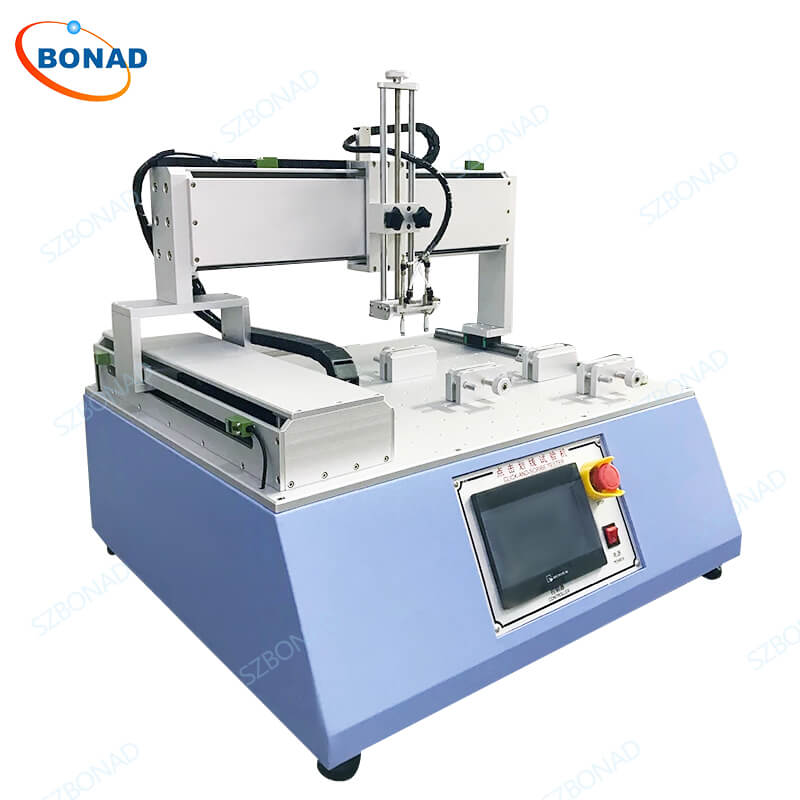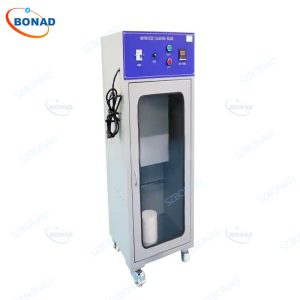Mobile Phone Touch Screen Click Line Life Test Machine – BONAD Screen Marking Tester
Principle
The core principle of the mobile phone touch screen click and line test machine is to simulate a user’s finger or stylus clicking and sliding on the touch screen surface. A high-precision servo motor drives the test head (which simulates a finger or stylus) with preset speed, force, and trajectory to perform continuous or intermittent click and line operations on the screen surface.
Application
This testing equipment is specifically designed for small consumer electronic products such as mobile phones, dialogue machines, and electronic dictionaries. It primarily conducts durability tests on handwriting screens and touch screens for drawing, clicking, and friction.
Features
- Motion Trajectory and Test: The machine offers a convenient coordinate point search function. By taking three points in the program, you can generate circular or triangular motion trajectories; two points to draw a straight line; and four points to draw a rectangle.
- Precision Motion Mechanism: Utilizing a stepper motor with linear guides and ball screws as the motion mechanism ensures accurate positioning, high precision, low noise, and long-term durability.
- Real-Time Display: The machine provides real-time display of current X, Y coordinates, motor drive speed, real-time position changes, etc.
- High-Quality Surface Material: The machine’s surface is made of high-hardness aluminum that is anodized for a rich texture.
- Durable XY Axis Drive: Driven by a stepper motor and ball screw, the XY axis offers high speed, low noise, and durability.
Technical parameters:
| Item | Specification |
|---|---|
| Equipment Model | BND-TSCL |
| Test Station | Single Station |
| Maximum Sample Size | 0-7 inches (or 200×100 mm) |
| Y-axis Movement Range | 150 mm |
| X-axis Movement Range | 150 mm |
| Cylinder Stroke | 0-15 mm |
| Movement Speed | 30-450 mm/min |
| Click Speed | 0-250 times/min |
| Pressure Range | 0-800 g |
| Test Count Range | 1-999999 times (settable, with stop counting function) |
| Control Functions | Digital setting for operating speed (X/Y axis) Digital setting for operating displacement (X/Y axis) Drawing modes: Long (positive) rectangle, straight line, triangle |













